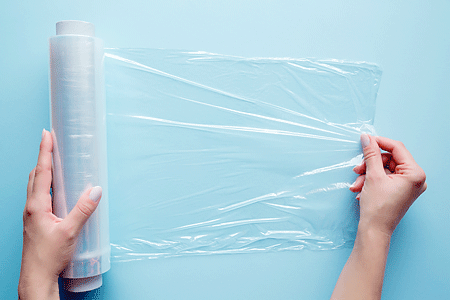Dermatologist's secret for removing gel nail polish at home
Acetone offers the most effective way to remove gel nail polish at home, says board-certified dermatologist Shari Lipner, MD, FAAD. Instead of wrapping your nails in foil, she recommends using plastic food wrap.
While applying acetone to your nails may sound harsh, picking or filing off gel nail polish can significantly damage your nails.
Don't use an orange stick to remove gel nail polish
Dr. Lipner cautions that this can injure your nails and cause white spots.

To remove gel nail polish, Dr. Lipner recommends gathering some common household items and following these steps.
Common household items you need
Before you start, gather these supplies:
Petroleum jelly
Cotton (balls or strips)
Scissors
Acetone (100%)
Plastic food wrap
Washcloth
Towel
Acetone can cause damage to surfaces
Acetone can damage sinks, countertops, and furniture. To protect your work area, line it with plastic wrap. Then place a thick towel on top.

Follow these steps
When removing gel nail polish from your fingernails, it is easier to work on one hand at a time. Another option is to have someone else remove the polish.
Whether removing gel nail polish from your fingernails or toenails, here are the steps to follow:
Apply a thin layer of petroleum jelly to each cuticle and the surrounding skin. This will help protect your skin from the acetone.
Cut the cotton balls or strip to the size of each nail. Using cotton that is about the same size as each nail reduces your risk of getting acetone on your skin. When acetone sits on your skin, it can irritate and damage your skin.
As a general rule: The nails on your pinkie fingers (5th finger) or little toes need about ¼ of a cotton ball. You can cover each of the other nails with ½ of a cotton ball.Soak each piece of cut cotton in acetone.
Place each piece of soaked cotton on top of the nail that it was cut to fit, and wrap the nail with plastic food wrap. You want a tight seal. Avoid wrapping your nails so tightly that you cut off your circulation.
Use plastic wrap instead of foil
Dr. Lipner recommends using plastic food wrap rather than foil when removing gel nail polish at home. When wrapped around your nails, plastic creates a tighter seal than foil, so the acetone is less likely to drip.

Leave the plastic wrap on for 10 minutes. When you remove the plastic wrap, most or all of the gel nail polish should be gone.
Remove any remaining gel nail polish with a washcloth that you’ve just run under warm water. Use the wet washcloth to gently rub off any remaining polish. Take care to rub only the nail and avoid rubbing the surrounding skin.
Wash your hands or feet with a gentle soap and water to remove the acetone. If you have a fragrance-free soap, use it. Any mild soap will help you avoid irritating your skin.
Gently rub petroleum jelly into your cuticles and the skin around your nails every day for seven days. This will help to reduce any irritation caused by the acetone.
Growing your nails offers a safe alternative
Dr. Lipner says the best way to remove gel nail polish is to let your nails grow out. Clipping them once a week will remove the gel nail polish and help prevent the nails from catching on clothing and other objects. If you choose this option, you need to resist the urge to pick at your gel nail polish. Picking and scraping off the polish can damage your nails.
Letting your nails grow is a slow process. Dr. Lipner says, “It takes about six months to grow out your fingernails. Toenails need 12 to 18 months to grow out.”
To properly trim your nails, follow these tips from board-certified dermatologists: How to trim your nails.
Related AAD resources
Images
Getty Images
All content solely developed by the American Academy of Dermatology
Supported by:
 Think sun protection during Skin Cancer Awareness Month
Think sun protection during Skin Cancer Awareness Month
 How to care for your skin if you have lupus
How to care for your skin if you have lupus
 Practice Safe Sun
Practice Safe Sun
 Sunscreen FAQs
Sunscreen FAQs
 Fade dark spots
Fade dark spots
 Hidradenitis suppurativa
Hidradenitis suppurativa
 Laser hair removal
Laser hair removal
 Scar treatment
Scar treatment
 Botox
Botox
 Kids' camp - Camp Discovery
Kids' camp - Camp Discovery
 Dermatologist-approved lesson plans, activities you can use
Dermatologist-approved lesson plans, activities you can use
 Find a Dermatologist
Find a Dermatologist
 Why choose a board-certified dermatologist?
Why choose a board-certified dermatologist?
